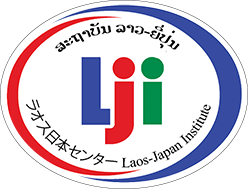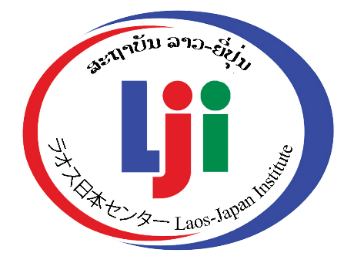- 詳細
- カテゴリ: LJI Business Journal Vol 8
- 参照数: 4386
 LJI Business Management Journal
LJI Business Management Journal
Volume. 8, Published on July 2017, Page 35
Challenges on logistics business development in Lao PDR
Phanhpakit Onphanhdala1*, Putthaxay Sirisack2 & Laddaphone Khantiyavong3
Abstract
This paper examines the development of logistics sector in Lao PDR. From a survey, three major challenges lack of comprehensive logistics hub, too many bureaucratic procedures and high transportation costs have been found to be major impediments for the development of logistics sector. Furthermore, that majority of joint venture freight transport firms find empty returning truck loads as the major problem in this business. Gradual liberalization is suggested so that the country can develop the capacity to absorb technology transfer and attract more foreign investment, which is important to improve competitiveness of local industry and thereby improve the balance between inbound and outbound volume of goods. The most important suggestion is for the Lao government to accelerate the development of dry ports in order to transform Lao PDR to a concrete unique land-linked country that operates trans-boundary transportation among the GMS countries
* Corresponding author: このメールアドレスはスパムボットから保護されています。閲覧するにはJavaScriptを有効にする必要があります。
1,3 Laos-japan Human Resource Development institute, National University of Laos, Vientiane, Lao PDR
Cite this article as:
Phanhpakit Onphanhdala, Putthaxay Sirisack & Laddaphone Khantiyavong. (2017). Challenges on logistics business development in Lao PDR. LJI Business Management Journal, 8, pp 35.
- 詳細
- カテゴリ: LJI Business Journal Vol 8
- 参照数: 5935
 LJI Business Management Journal
LJI Business Management Journal
Volume. 8, Published on July 2017, Page 1
FinTech contribute to the advantage of backwardness
-a case study of Laos -
Nobuo Hirohata
Abstract
This paper describes the possibility of introducing FinTech into the financial sector in Laos, 1) the outline of FinTech, 2) the current situation of financial sector in Laos, 3) the possibility of introducing FinTech into the financial sector. FinTech will be able introduced, and will have huge impact to the financial sector in Laos. As a road map, online lending and security systems have huge potentials contributing to the business market now. Cloud funding, online payment, and service application providers for accounting will be introduce in the near future. Mobile settlements and robots advisers will be introduced later. In Laos, there is the possibility of the development going forward in largely determined stages through introducing advanced technologies, FinTech in financial sectors, developed in advanced countries. Laos will enjoy the advantage of the backwardness and will catch up to middle-income countries.
- 詳細
- カテゴリ: LJI Business Journal Vol 8
- 参照数: 5930

LJI Business Management Journal
Volume. 8, Published on July 2017, Page 48
Local firm’s Response to Global Financial Crisis: A Case of an Apparel Factory in Lao PDR
Bounlouane Douangngeune1 & Sifong Thavixay2
Abstract
This study analyzes a small local apparel factory’s strategic response to the recent global financial crisis in 2008 based on strategic approaches. Before the crisis, small Laotian-owned apparel factories operated mainly on subcontracting arrangements with general contractors who produced based on orders from brand owners in abroad. The crisis broke down such subcontracting arrangement; thus, the apparel factory understudy has turned to produce for through enhancing its strengths, minimizing weaknesses, taking opportunities, and hedging against threats.
1 Laos-japan Human Resource Development Institute, National University of Laos, Vientiane, Lao PDR
Cite this article as:
Bounlouane Douangngeune & Sifong Thavixay. (2017). Local firm’s Response to Global Financial Crisis: A Case of an Apparel Factory in Lao PDR. LJI Business Management Journal, 8, pp 48.
- 詳細
- カテゴリ: LJI Business Journal Vol 8
- 参照数: 4831
 LJI Business Management Journal
LJI Business Management Journal
Volume. 8, Published on July 2017, Page 9
A Study on Public-Private Partnership in bridging skill supply and demand in the automotive industries in Lao PDR
Maniphet Chounlamany1 & Bounlouane Douangngeune2
Abstract
In light of the regional integration into the ASEAN Economic Community, upgrading the competitiveness of Lao PDR’s private sector is essential. Close cooperation and coordination between businesses and vocational training institutes become indispensable, in order to match vocational education with labor market requirements. The aim of this study is to investigate the public-private partnerships (PPPs) arrangement in order to gain a more in-depth understanding of the concrete level of PPPs schools and businesses have been in collaboration in the form of Dual-Cooperative Training (DCT). The study additionally examines graduates’ opinions towards vocational education training received if it provides skills and knowledge required in their actual job. The assessment on acquiring the employers’ perceptions of the job performance of school graduates in the workplace if they perform well and their skills and knowledge meet the employer’s requirements is also conducted in the study.
As a result of the study, the findings not only provide comprehensive information contributing to a greater understanding of the concrete level of PPPs Lao-German Technical College (LGTC) and companies have been in collaboration in the form of DCT, but also offer useful insights into the situation of PPPs in TVET is to date and how is the effectiveness of PPPs contribution to bridging the gap of skill mismatch. From the findings, partnership with companies and DCT activities designed and organized in accordance with the special interests of TVET institutions, companies, and students becomes more and more attractive. Students see the importance of vocational training for their jobs and they are also satisfied by their employers. As a result, it confirms that the DCT model implemented by LGTC and companies is mutually beneficial for all stakeholders e.g. government, schools, students, and companies.
However, to date, little involvement of employers in vocational has been established. Hence, there is a need to raise awareness among the private sector for TVET–schools, since many companies have not heard about this concept yet. They, therefore, did not consider students from TVET-school for hiring.
As a result of a case study of LGTC, the lesson learned from them should be revealed to inform other private companies, vocations institutions, and students about the benefits of dual cooperative training in Laos.
2 Laos-japan Human Resource Development Institute, National University of Laos, Vientiane, Lao PDR
Cite this article as:
Maniphet Chounlamany & Bounlouane Douangngeune. (2017). A Study on Public-Private Partnership in bridging skill supply and demand in the automotive industries in Lao PDR. LJI Business Management Journal, 8, pp 9.
- 詳細
- カテゴリ: LJI Business Journal Vol 8
- 参照数: 5874

LJI Business Management Journal
Volume. 8, Published on July 2017, Page 55
The knowledge management in medium-size Agricultural Company
The case of Mittaphab Development Agriculture Company Limited (MDA)
Salaksone Korasack1 & Bounlouane Douangngeune2
Abstract
In the New Economy characterized by properties such as globalization, intangibility, and inter-connectivity, business organization is required to face new challenges, especially the changing nature of competition coupled with the enhanced dynamism and complexity of the environment in which they operate. One of the current strategic philosophies assisting firms to develop strategic capabilities dealing with uncertainty is knowledge management (KM). Through the systematic acquisition, creation, sharing, and use of knowledge, organizations develop, renew and exploit their knowledge-based resources, thereby allowing them to be proactive and adaptable to external changes and attain competitive success in the future.
The objectives of this research are to identify the current knowledge structure and management in MDA (as well as in the context of Laosamay Group) and to investigate and identify the optimal knowledge management system of MDA incorporating understanding and the needs of KM the team and employees of MDA by implementing an Experimental Case study.
The study was divided into three parts according to the experimental process, the first part was marking understanding of knowledge Management to all employees in MDA’s Kapsone Farm and making a survey on the needs for KM, current problems, and current KM situation with the organization. The second part was the beginning of the experiment occurring within the organization. The third part was the last past, which was to check for the effectiveness of each activity that had been implemented by the experimental process, to find out the most optimal activities and practices for the creation of the knowledge Management System and for future development of the organization’s KM practice.
2 Laos-japan Human Resource Development Institute, National University of Laos, Vientiane, Lao PDR
Cite this article as:
Salaksone Korasack & Bounlouane Douangngeune. (2017). The knowledge management in medium-size Agricultural Company -The case of Mittaphab Development Agriculture Company Limited (MDA). LJI Business Management Journal, 8, pp 55.





